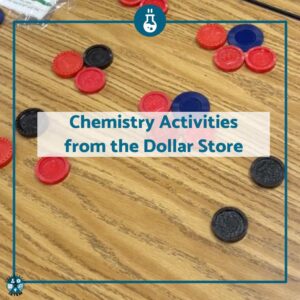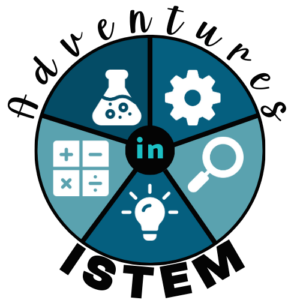Teaching heat transfer by conduction, convection, and radiation is one topic that excites my students. It’s important to help them understand how energy moves through our world. I’ve found that using the 5E lesson plan model—Engage, Explore, Explain, Elaborate, and Evaluate—to help me teach thermal energy transfer makes this big concept much easier for them to grasp. Let me share how I break down the concept of the 3 ways heat transfers into manageable steps over 3-4 weeks to help my students understand the concept.

5E lesson plan Step 1: Engage
I like to kick off my heat transfer 5e lesson plan unit with an activity that grabs the students’ attention right from the start—a thermal imaging camera used during a paranormal investigation. This activity always gets them curious and eager to dive into the science behind it. The setup is simple but effective, and it only takes about 15 minutes.

We begin with a Google Slides presentation that sets the stage. First, I show a short video clip that shows a door opening and closing on a lower level seemingly by itself and replay it twice to make sure everyone catches the details. Then, we move on to the next slide, which highlights what the thermal camera picked up during the clip. This sparks a lot of curiosity and questions among the students, setting the perfect tone for a class discussion.
After discussing what they’ve seen, I play another clip where the investigators try to find a logical explanation for what was captured. We wrap up with a slide showing how humans appear on a thermal imaging camera and compare it to the earlier footage. This leads to another round of discussion, where students start to piece together the science of thermal energy transfer, all while staying engaged with the mysterious context of the investigation.
5E lesson plan Step 2: Explore
Next, give students time to explore thermal energy concepts through a series of heat transfer science stations. Set up different stations that allow them to experiment with conduction, convection, and radiation. These stations encourage students to observe, hypothesize, and discuss their findings with peers, laying the groundwork for the explanations to come. I like to have them come up with their own ideas before I give them the information. I feel its really important to have structured time for students to do some critical thinking so they learn to think on their own instead of just following what they are given.

At the first station, students investigate radiation by exploring how the Sun’s energy affects light and dark objects. They use thermometers to measure the temperature change in objects made from the same material but with different colors, such as black and white felt or construction paper. This activity helps them see firsthand how color and material influence heat absorption and radiation.
The second station focuses on convection. Here, students use petri dishes, food coloring, and water at different temperatures to observe how heat causes movement in fluids. They drop red and blue food coloring into hot and cold water and watch as the colors mix. This visual experiment allows them to understand how convection currents work, laying the groundwork for more complex discussions about heat transfer in liquids and gases.
Finally, at the third station, students explore conduction by comparing how heat is transferred through different materials. They touch metal and plastic surfaces and note the difference in temperature sensation, which helps them understand why some materials feel hotter or colder than others even when they’re at the same temperature. This hands-on comparison reinforces the concept of conduction and why different materials conduct heat at different rates.
5E lesson plan Step 3: Explain
For the explain station I like to do the flipped classroom. My students watch a video about conduction, convection, and radiation and take notes at their own pace. Once they are done with the video they take a practice quiz to test their understanding of the concepts that were in the video. The reason I like doing the flipped classroom is because my students can watch the video at home which leaves more time in class to do fun interactive investigations. They also get to go at their own pace and can pause and rewatch the video so everyone gets notes.

Instead of doing a flipped classroom you could show your own presentation and have the students take notes in class. Another option, is to use the textbook or a thermal energy reading passage for students to read and pull information out of and learn the topic that way.
5E lesson plan Step 4: Elaborate
The elaborate phase is a chance for students to practice what they are learning about thermal energy and heat transfer and go deeper. I usually do a few things during this phases. First, I have either a small extension activity or a review activity depending on what the students show me they need after doing the flipped lesson. then, I like using a student choice to let students decide how they want to extend their knowledge. Finally, I end with some type of review

First part: Review and extend
Extend
In this extension activity, students will deepen their understanding of thermal energy transfer through two hands-on experiments. First, they’ll observe convection by placing a small beaker of hot, colored water into a larger beaker of cold water, and then reversing the temperatures in a second trial. This visual demonstration helps clarify how heat moves through liquids. Next, students explore conduction by covering containers with various materials—fabric, aluminum foil, paper, and bubble wrap—then filling them with hot water to see which material retains heat best. These experiments allow students to see thermal energy transfer in action and discuss their findings.
Review
For students needing extra support, the review activity offers a focused session where they work in pairs to reinforce their understanding of thermal energy transfer. They’ll start by reading a handout that breaks down the concepts of conduction, convection, and radiation, followed by an interactive notebook activity. This involves cutting out and gluing in definitions of each type of thermal energy transfer, helping students solidify their grasp of the material through structured, step-by-step practice.
Second Part: Student Choice
In the Thermal Energy Menu Choice activity, students demonstrate their understanding of thermal energy transfer by selecting from a creative “menu.” They start with an appetizer, choosing either to create a flipbook or trading cards that illustrate the three types of heat transfer: conduction, convection, and radiation. This helps them visually break down the concepts.
For the main course, students can choose to create a video or a mock social media post showing how particles move from a hot substance to a cold one, identifying the heat transfer involved. Finally, for dessert, they can design a newsletter or produce a TV news report showcasing how thermal energy transfer is used in cooking, connecting the concepts to everyday life.
Third Part: Review
As a review activity, I have students working on a heat transfer digital interactive notebook, completing exercises that cover conduction, convection, and radiation. This allows them to demonstrate their knowledge of the unit and I can do some last minute clarification before we move onto the final phase.
5E lesson plan Step 5: Evaluate
For the end of the heat transfer 5e lesson plan unit, I have the students do two things. First, they take a unit quiz. This lets me know if they know the basic information from the unit. It is mostly multiple-choice with some sorting, drawing, and short answers. Then, I have them do a “Save the Penguins” project to demonstrate they can apply their knowledge.

The Save the Penguin STEM Challenge is a hands-on project where students use their knowledge of thermal energy transfer to design a prototype that minimizes heat loss. Over several days, they research insulation and how scientists protect penguins from global warming. Using materials like cotton balls, foam sheets, and aluminum foil, students build a “dwelling” for an ice cube “penguin” to keep it from melting.
Students start by researching thermal energy and insulation, using resources on how nesting boxes help real penguins. After gathering information, they design and test their prototypes, measuring how much mass the ice cube loses. Based on the results, they refine their designs to create the most effective insulation, making the learning process both practical and engaging.
Teaching thermal energy transfer with the 5E model over 3-4 weeks ensures students have a deep, lasting understanding of the material. By engaging them with inquiry investigations, allowing them to explore through hands-on stations, and reinforcing learning through flipped lessons or in-class readings, you’re setting them up for success. The elaborate and evaluation phases solidify their knowledge and give them a chance to apply it in meaningful ways.
Ready to get started? I have this whole 5E lesson already planned out and ready for you to implement in your classroom today.





